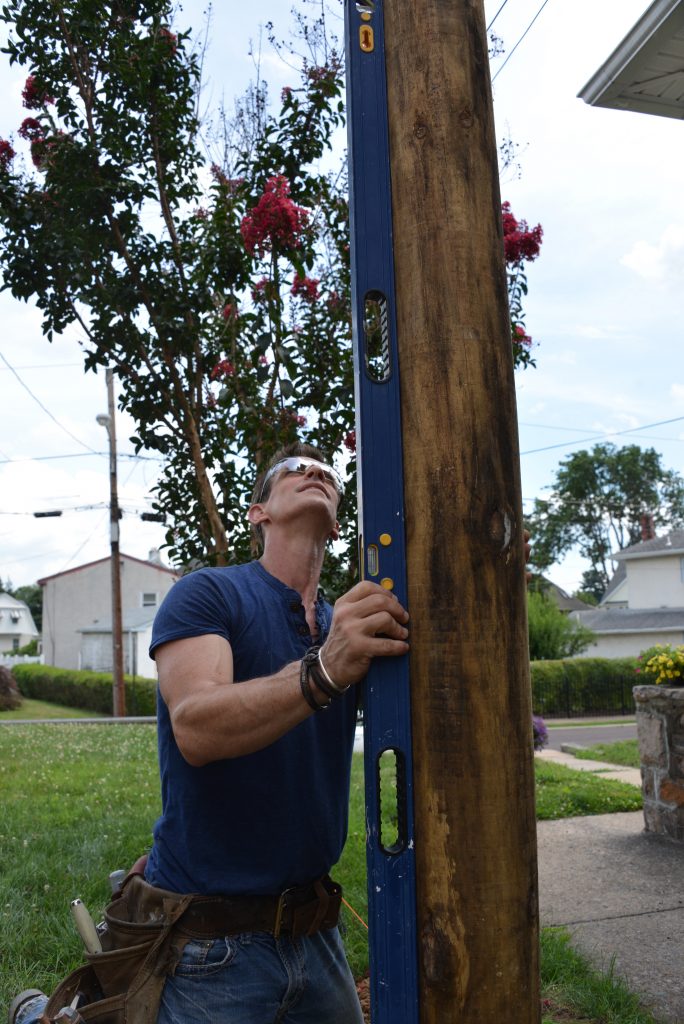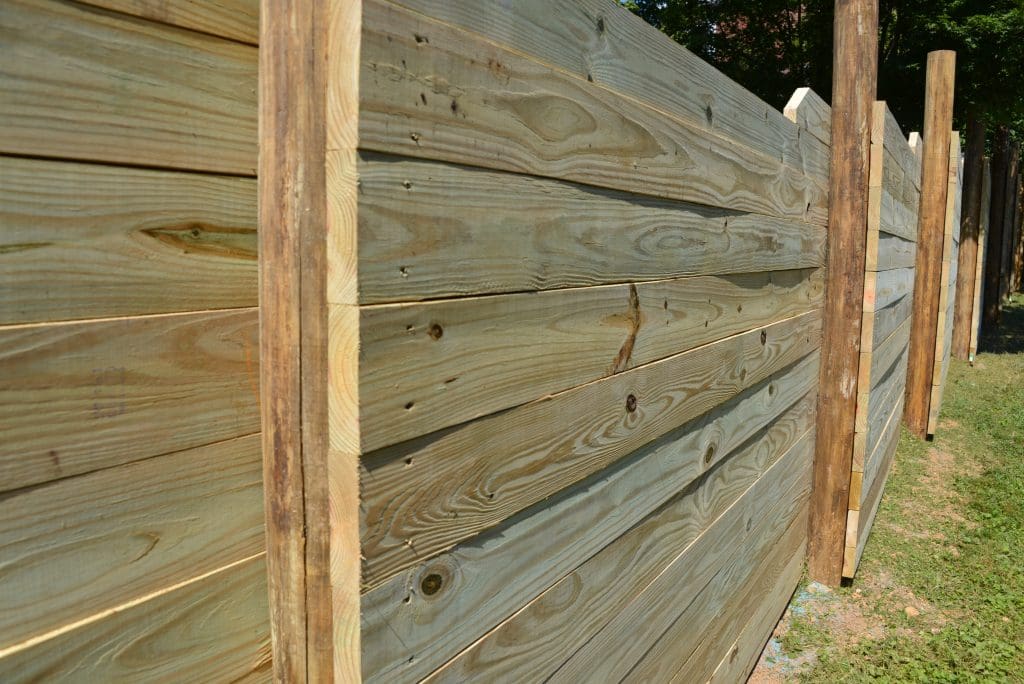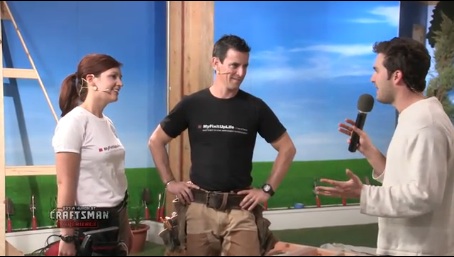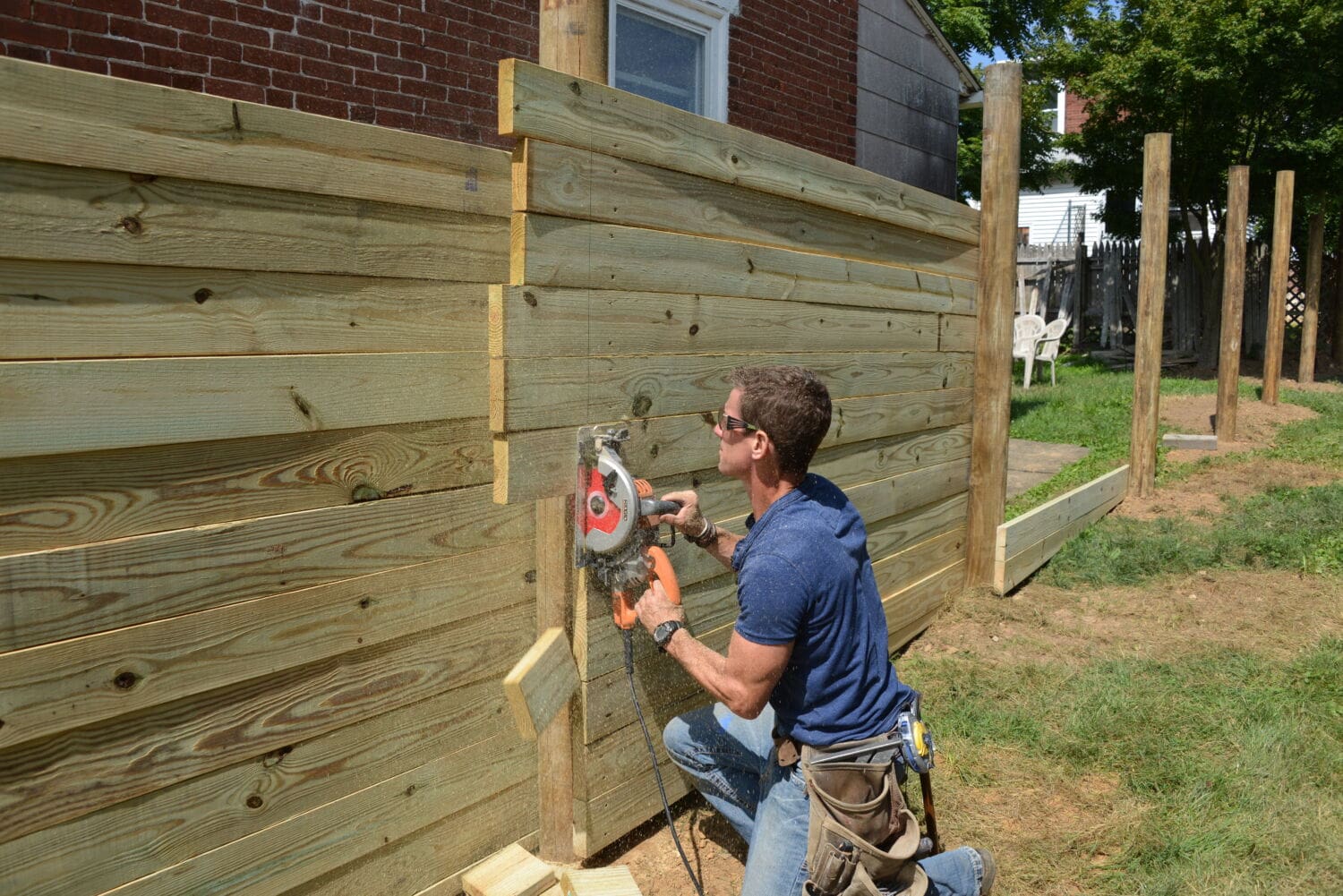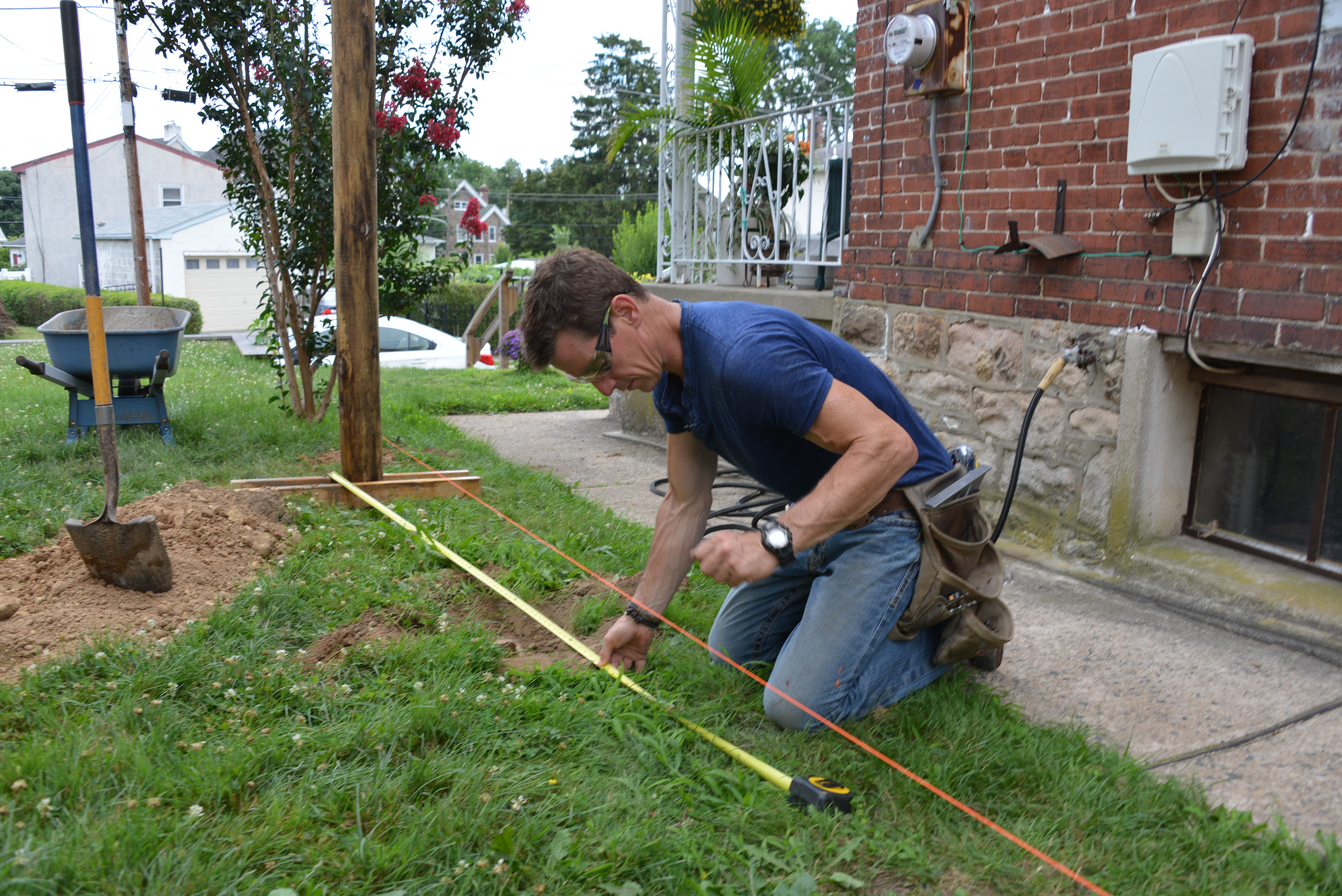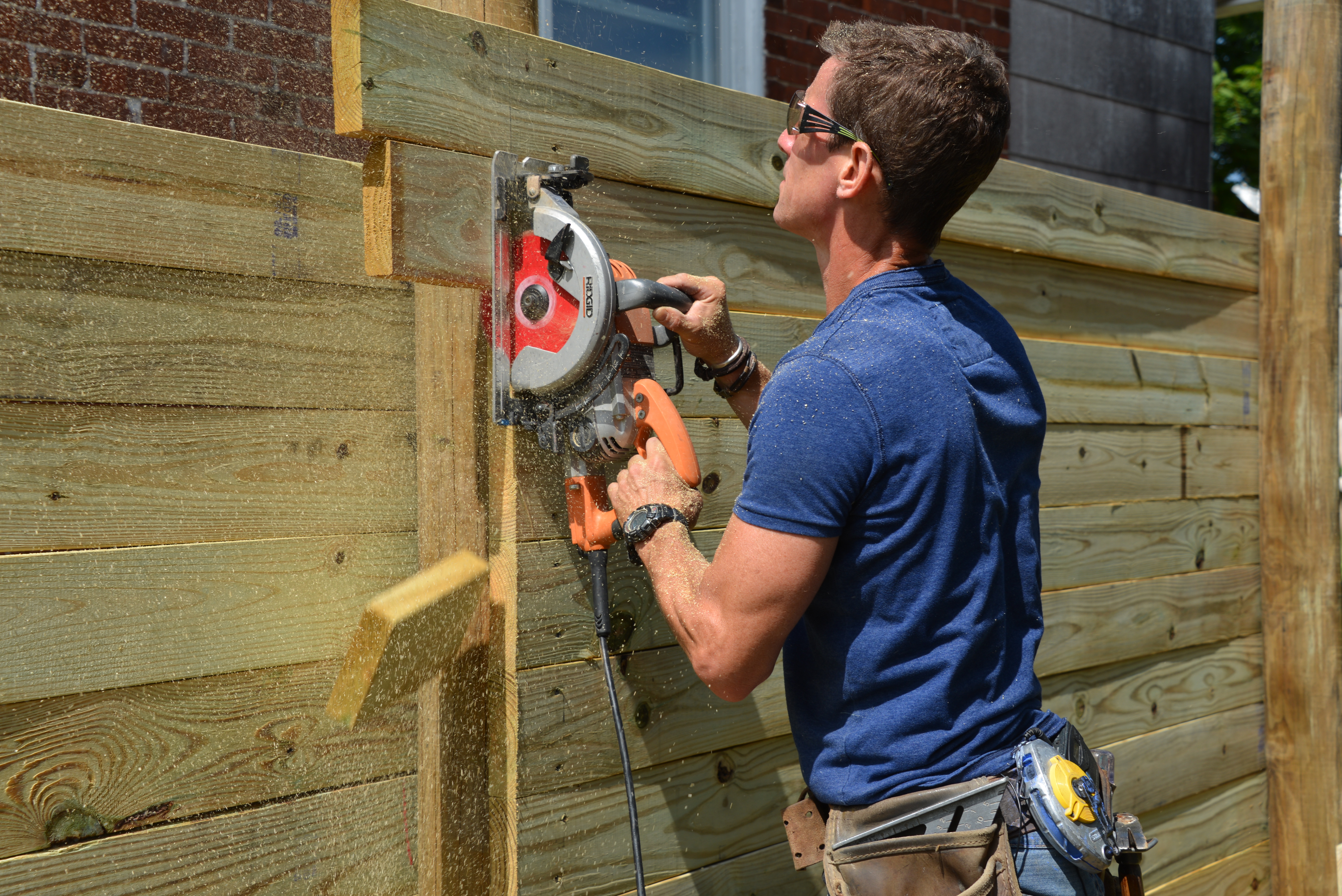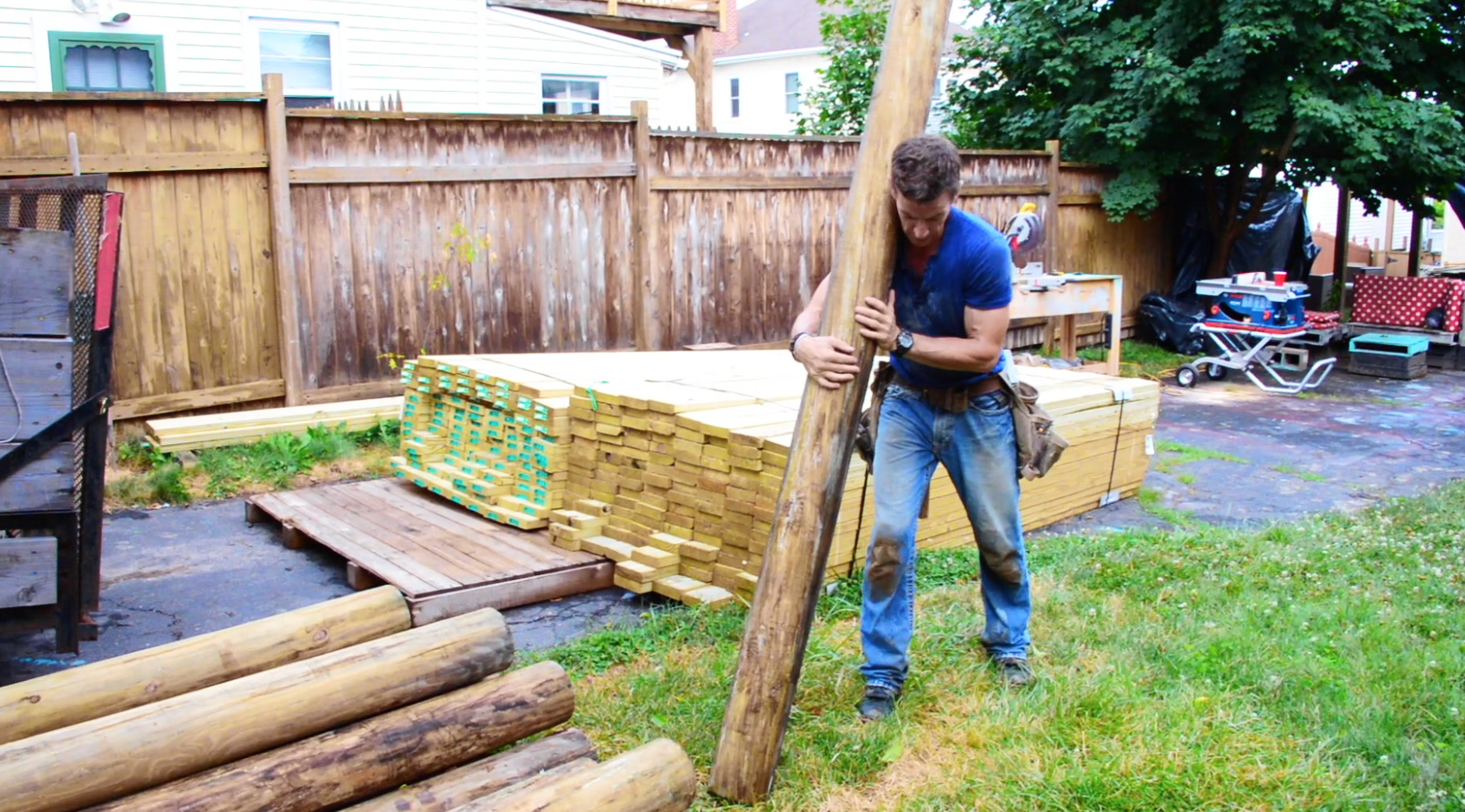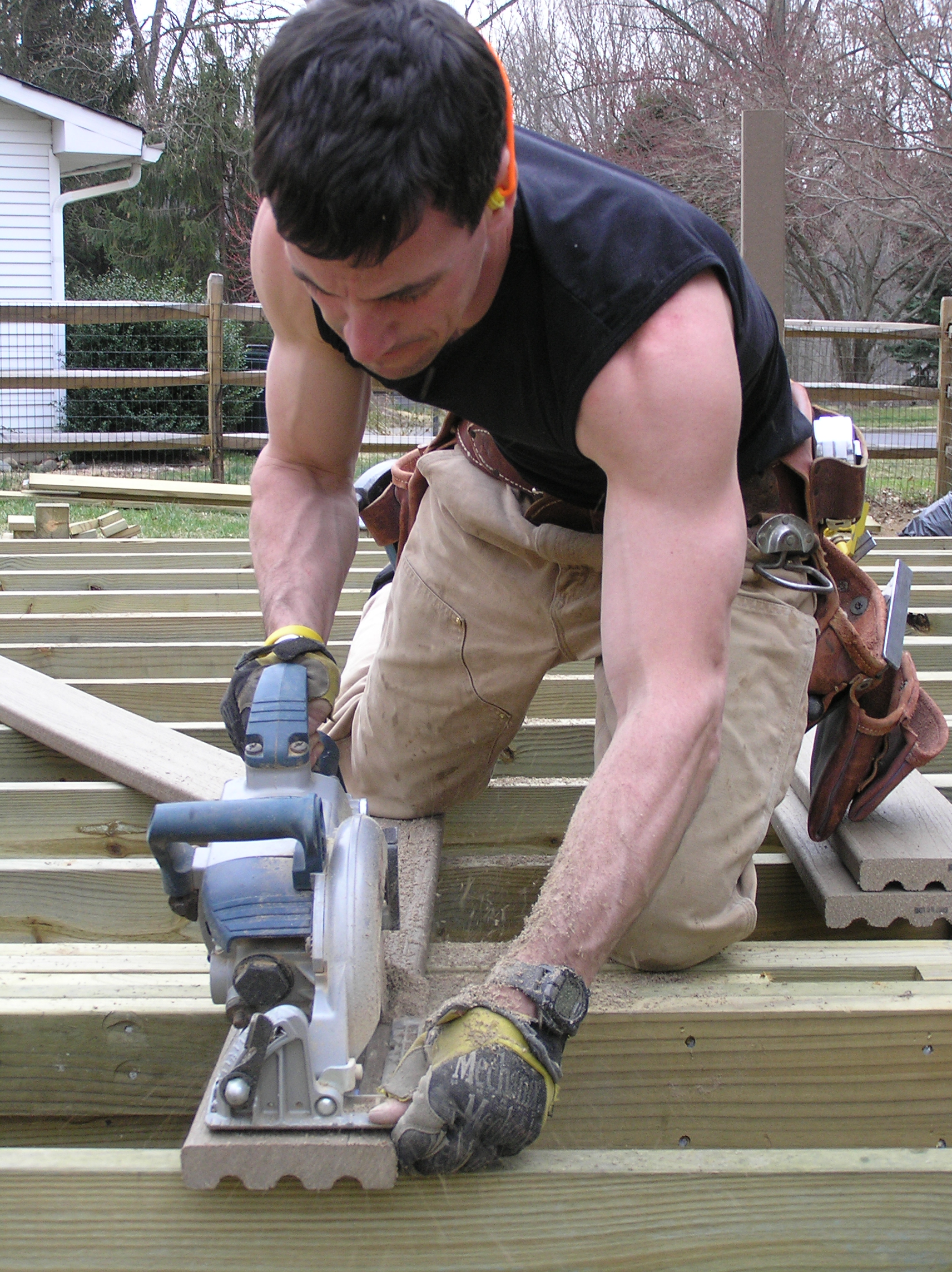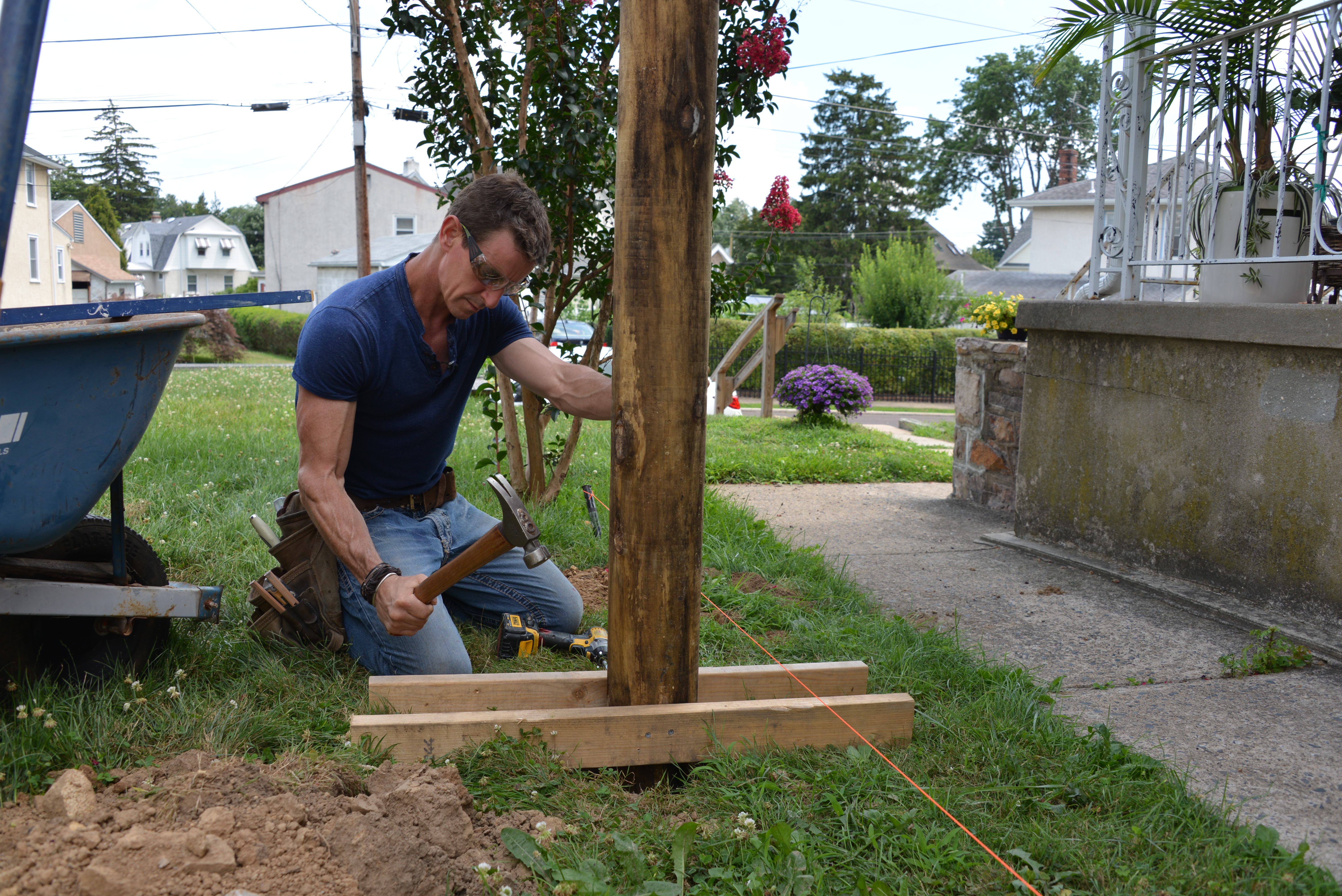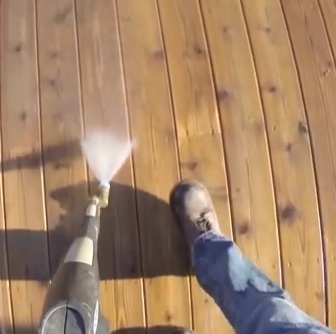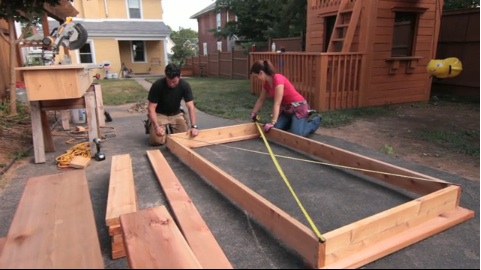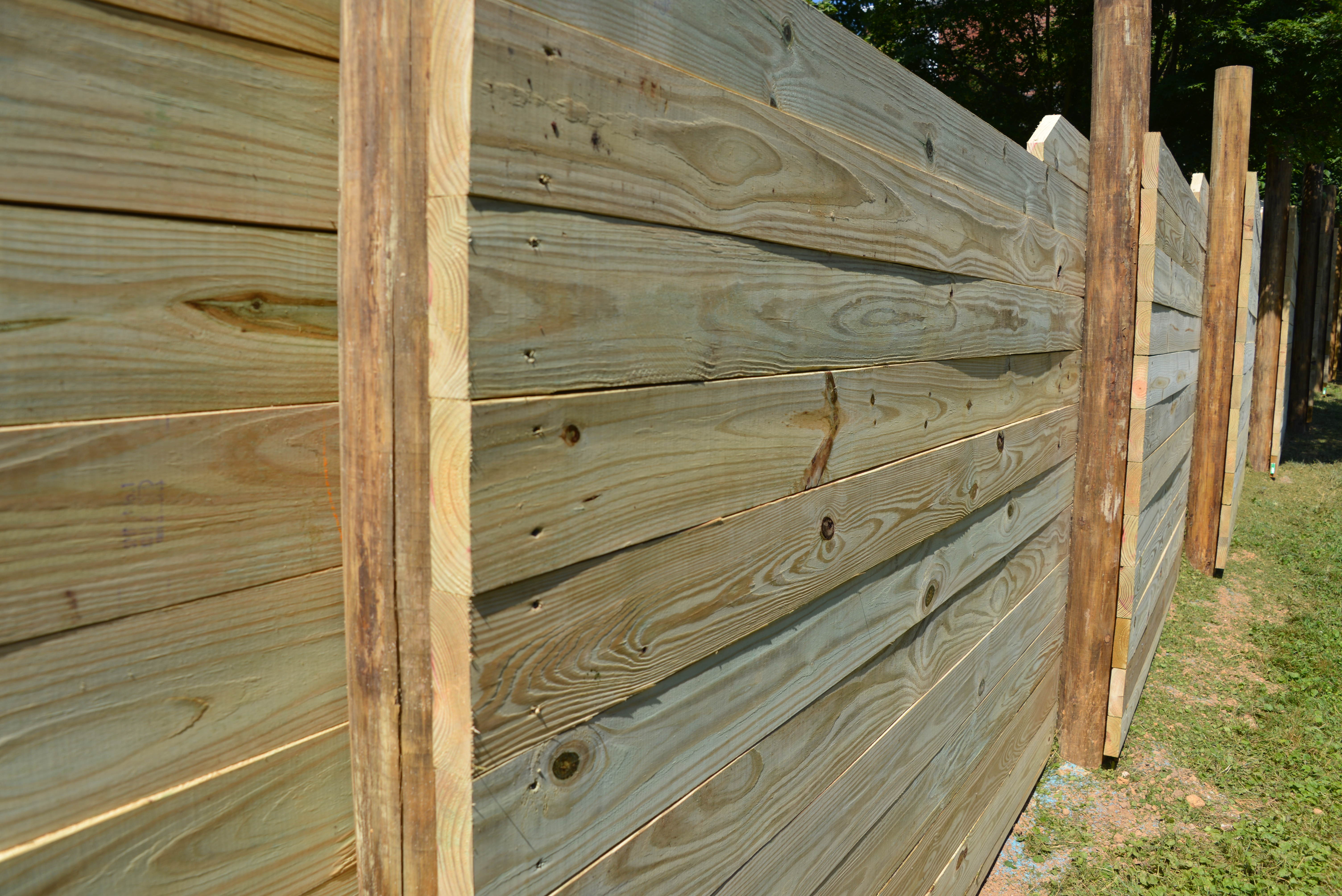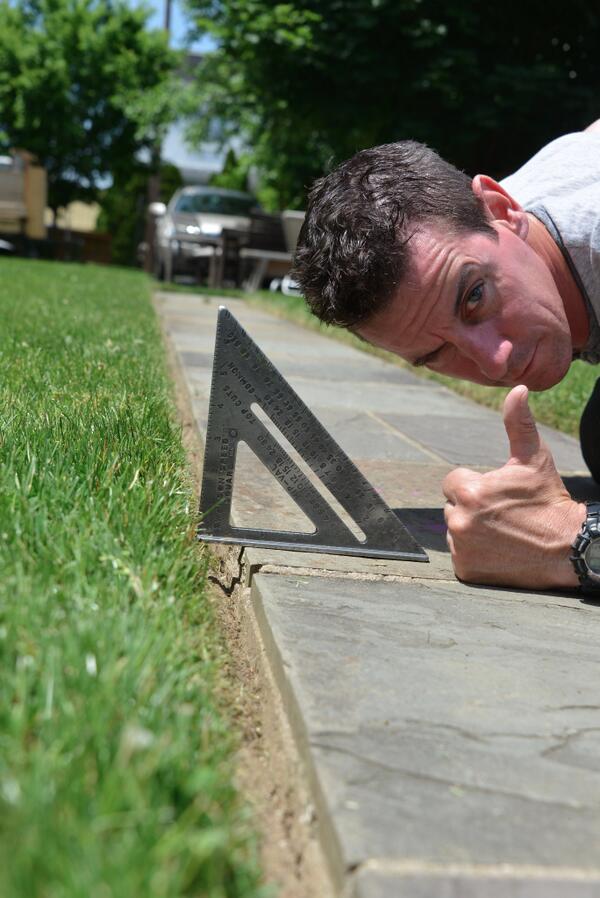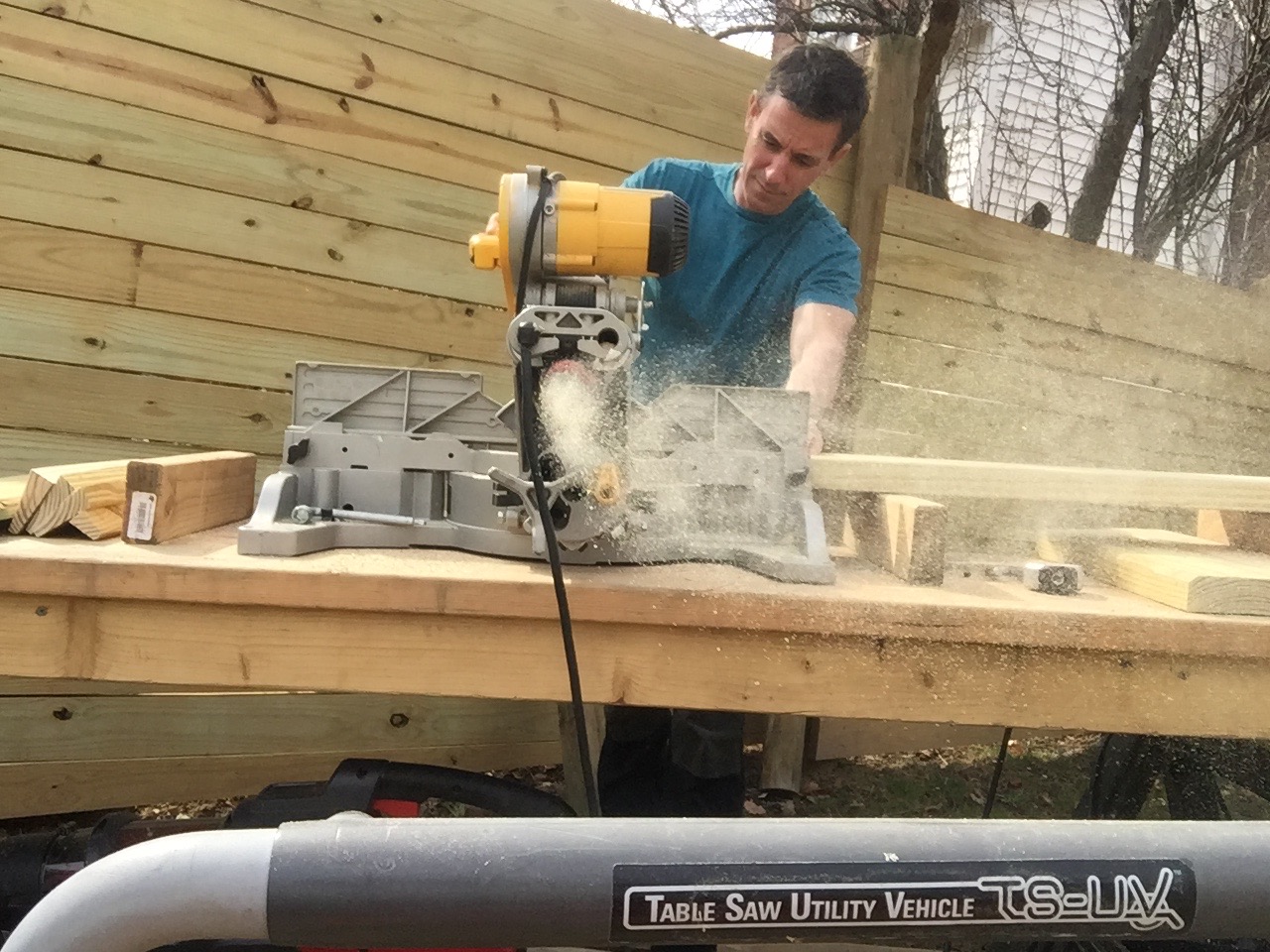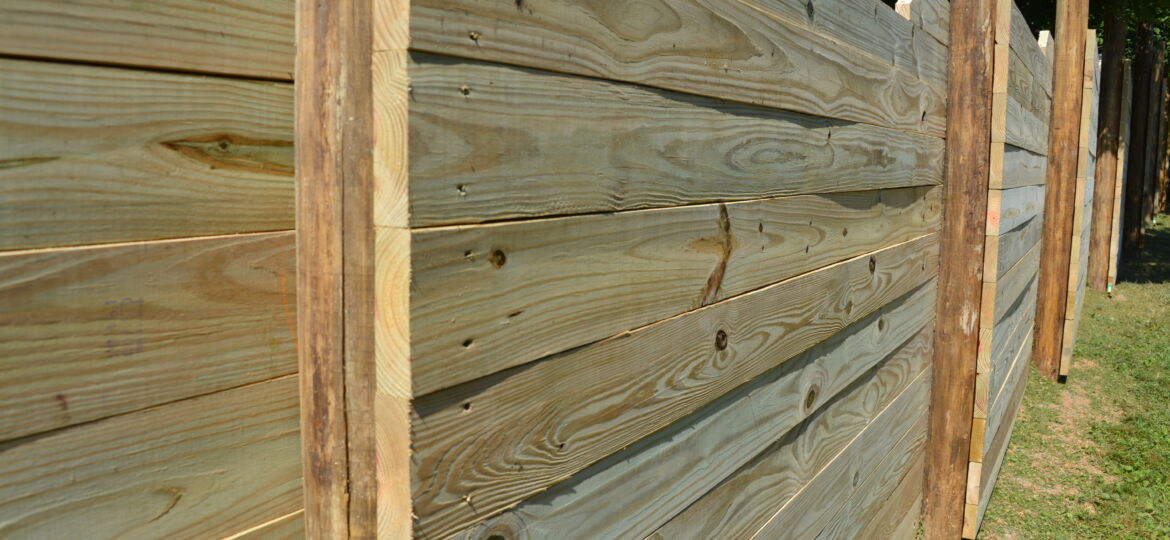
I don’t just like this wood fence design—I love it! And I hope you do too.
For me, a fence is more than a simple barrier or dividing line. It’s a statement.
And I extra-love it when it can be beautiful and super-functional. Because this fence design is brought to life with long-lasting, structural wood it creates barrier and border along with useful vertical space for fun, fitness, even storage.
I chose pressure treated Southern Pine. Rated for ground contact, it for both the posts and the planking. I know the posts will last in the ground and the planks will be easy to maintain for the life of the fence while delivering a truly unique look.
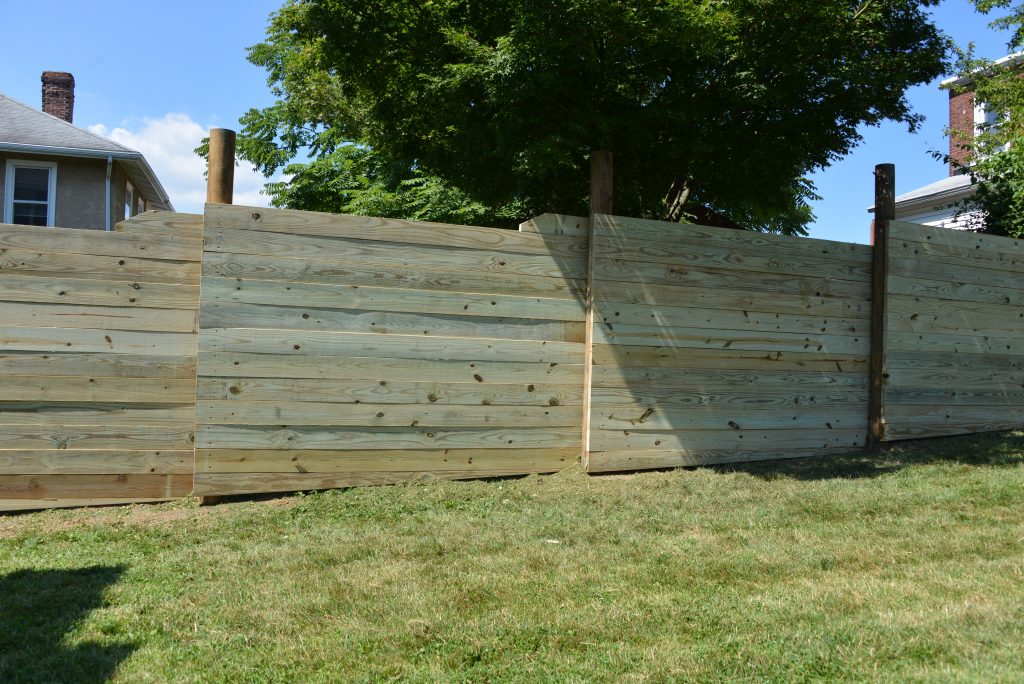
Underlying all this is a composite fence on the property, just a few years old, that’s a mess. It promised wood-like performance then promptly failed in just about every way.
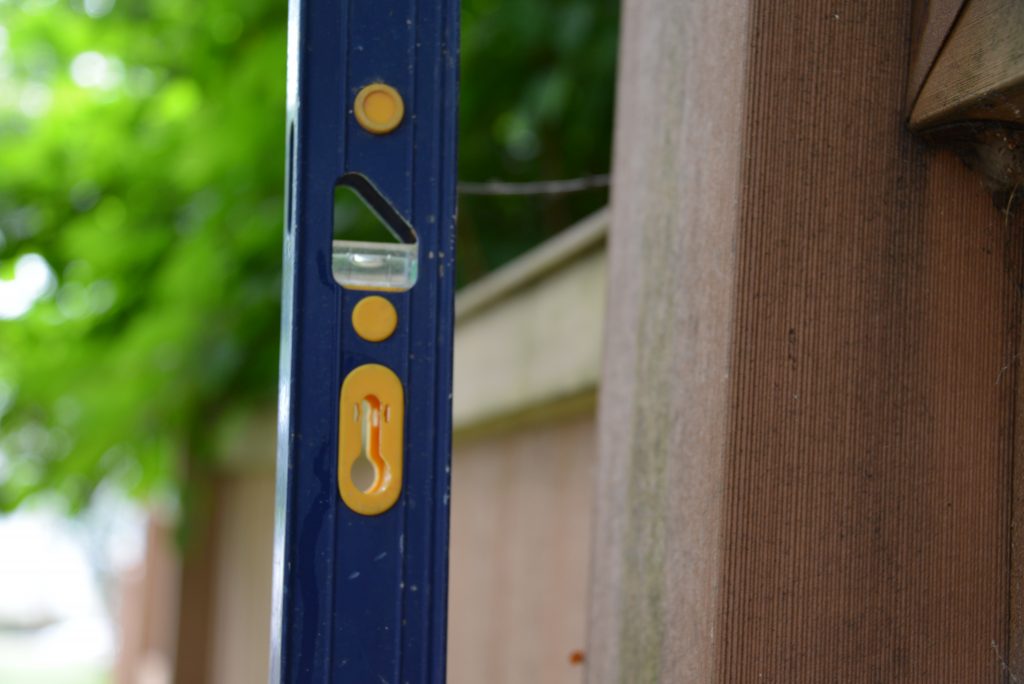
The composite was expensive. It was supposed to resist mold (fail), mildew (fail), low maintenance (fail) and stay as straight as a wood fence (extra fail).
Every-single-rail sagged. The top-cap material was too short. Every post bent inches out of line. The metal hardware (ugly) instantly lost its coating (fail) and the whole thing proved nearly impossible to clean. It did nothing it was supposed to do.
Furthermore, as a carpenter and someone who loves working with wood, I see synthetic fences all the time with dirt, grass clippings, and debris fused to them. I see broken, hard-to-replace, and missing parts. I see gates that sag and squeak. Hopelessly under-built, there’s barely any structure to them.
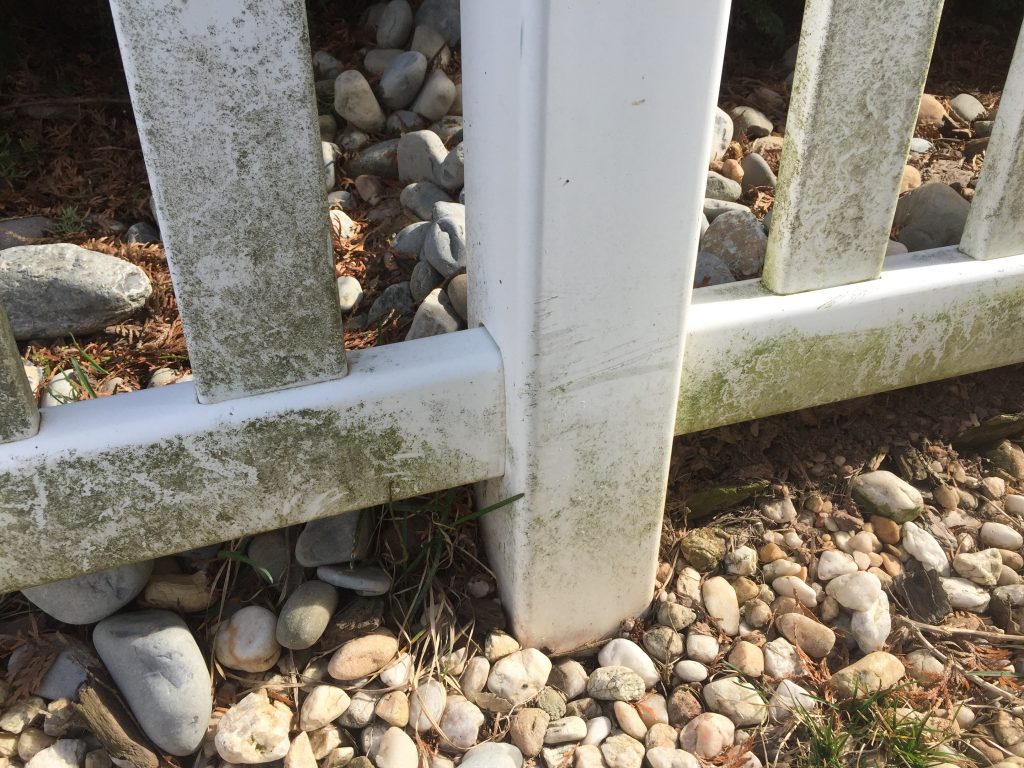
As for disposing of the composite fence, I’m not in love with throwing huge amounts of plastic away—and this is a lot of plastic. Composites are typically petroleum-based which is difficult (some say impossible) to divert from the waste stream and does not burn anywhere near clean in a trash-to-fuel facility. While I found one editor’s letter from Deck Magazine from 2009 noting that composite decking could be recycled, I found very little current information or resources for this fence where I live and work. And, where I live and work, our debris is typically land-filled or incinerated. Wood, on the other hand, can be diverted from the waste stream in any number of ways and recycled into anything from bark mulch to fuel (incinerators here are also power plants).
So I like to build with wood. To get wood-like performance in the replacement fence, I went to the source and used wood.
With wood, I can create nearly any design I want, have something I know will last, and be vastly more functional be easier to maintain. And this fence design—that can’t be made with anything else—is elegantly simple.
Comprised mainly of two parts—round posts and 2×6 rails—this fence creates a beautiful and unique border you can use for much, much more than not seeing your neighbor’s yard.
Round, natural-looking posts (only possible with natural wood) are ideal here. Increasingly popular on vineyards and farms I love them in back yards too. Set about 8-feet apart along the property line, I fasten the 2×6 planks to the front of the first post, then to the back of the second post and continue down the line. Alternating every panel front-to-back, front-to-back, this creates visual interest and truly unique texture I really enjoy.
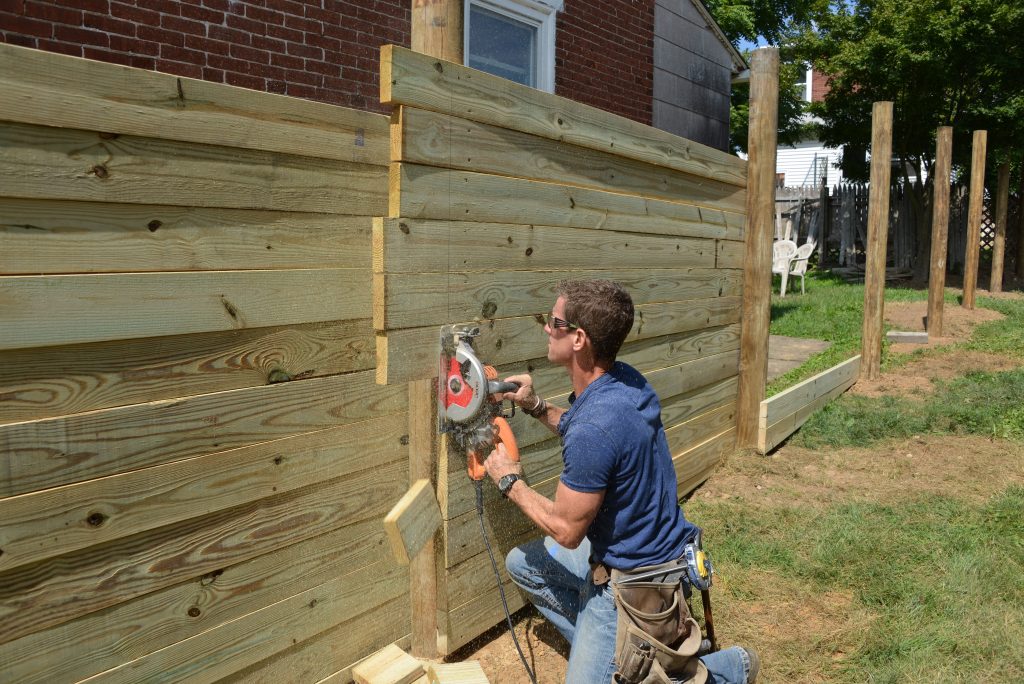
This fence design is super solid. Unlike the current fence, I can actually use this fence. A few left over wood blocks fastened to the panels makes a mini climbing wall for my son (and me!) I can finally store my ladder and extra garden hose out of the way. By making one post extra tall, I have the beginnings of a zip-line and back yard exercise zone.
Wood enables me to create a design, not assemble parts. I can build something that looks sensational and provides function for the long haul.
